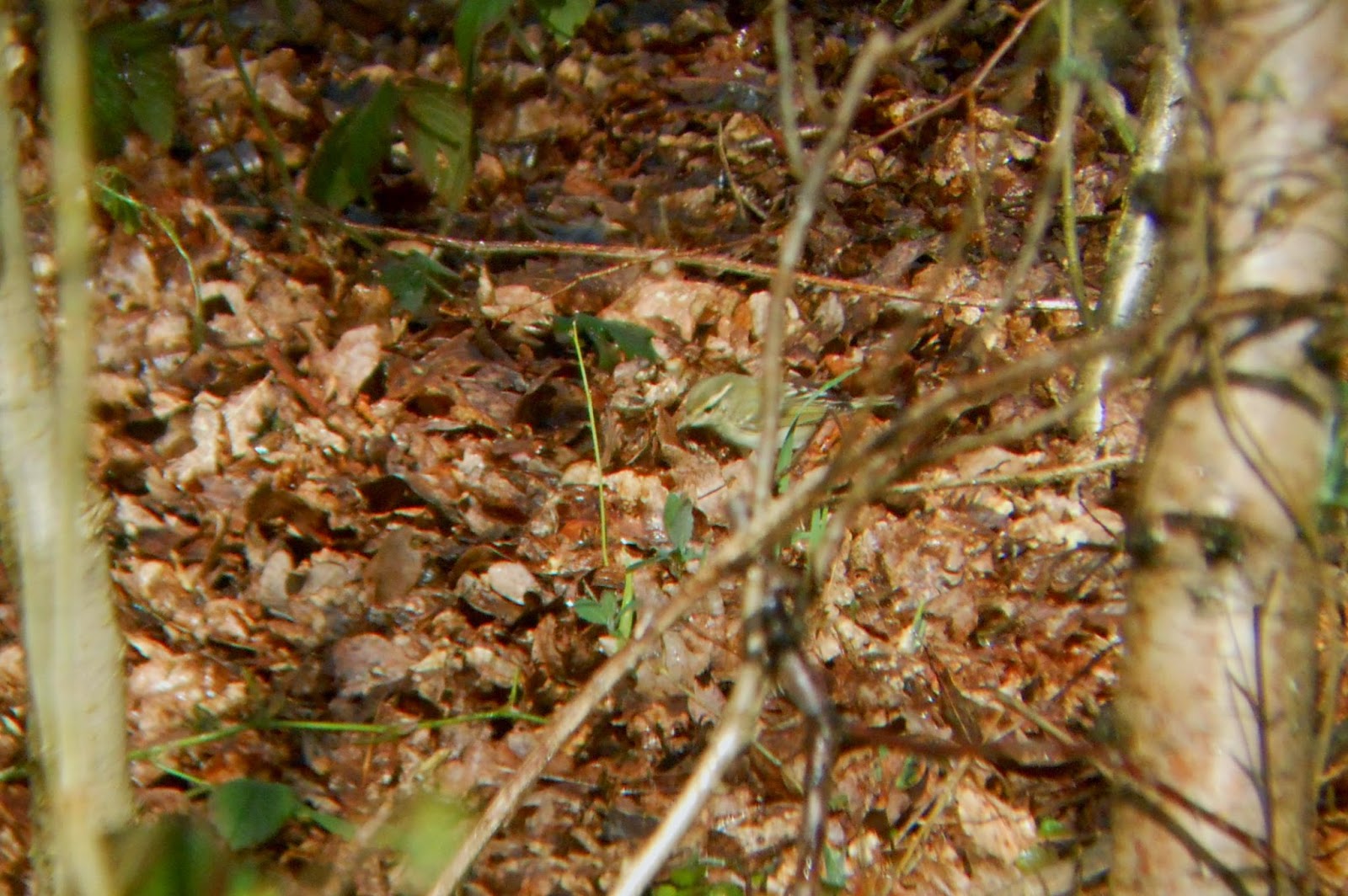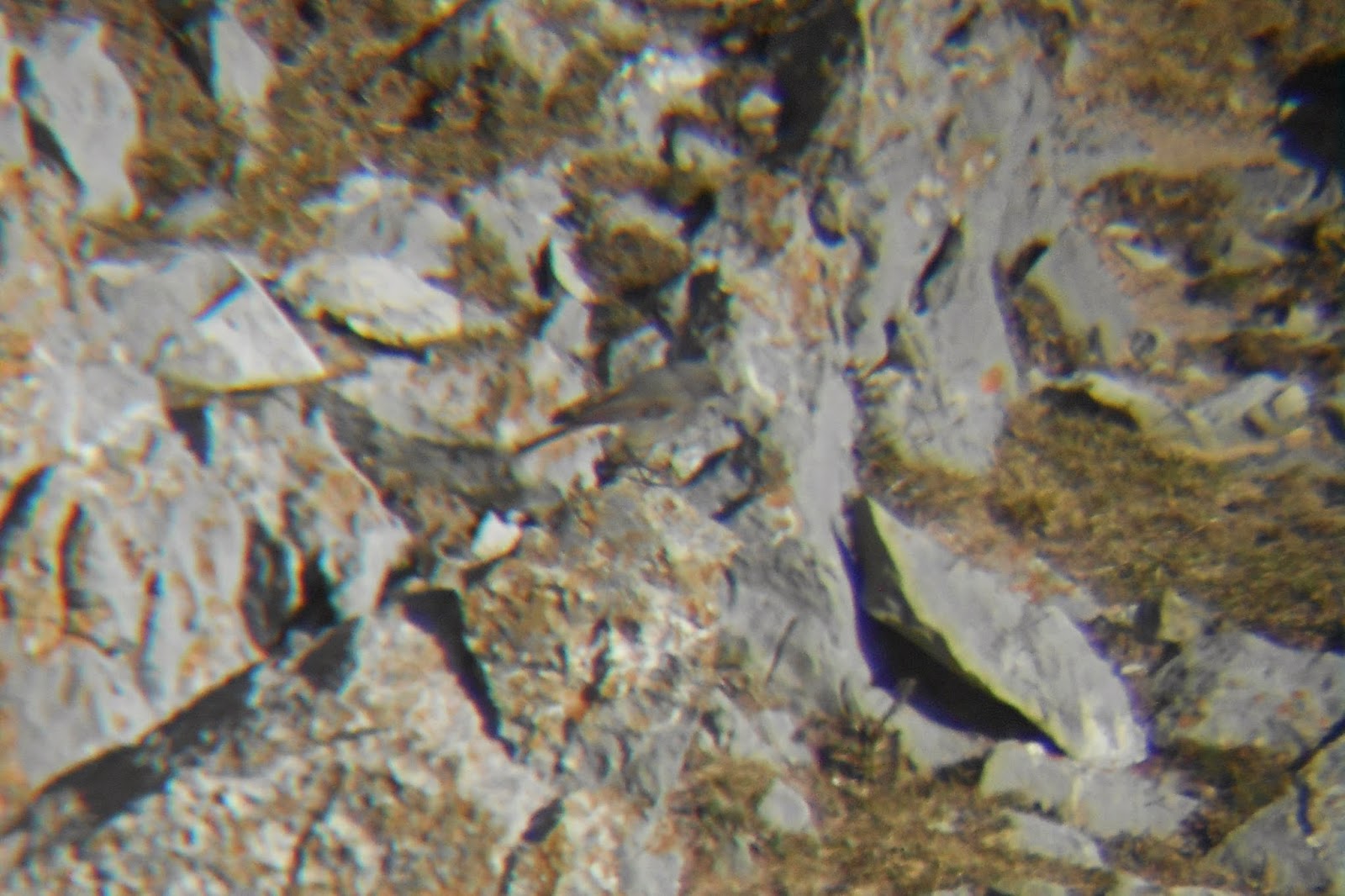16/03/14
Having spent over 8 hours in a car the previous day, I decided to stretch my legs, so I decided on a very long walk from within the county of Shropshire back to Stourport, a route which would take me through a variety of woodlands, farmland and along the river. A good mix of habitats and hopefully I would check some areas that I may not have previously visited!
I didn't particularly plan very well though, so no map, or compass, just me, a sense of direction and some common sense.
The first standout bird of the walk came when I found one of the TWO-BARRED CROSSBILL at Postemplain, calling its head off from deep within the pines. Sadly however, apart from this though the surrounding pine plantations were rather devoid of life.
Moving across the road I then worked my way through the main bulk of the forest, along a variety of rather confusing path! Although very little wildlife was seen, it was great to be able to be somewhere, and not see, or hear a single person! I really was in the middle of no-where! I managed to find my way onto the Dowles Brook valley, and followed this all the way until it outflows into the River Severn. Sadly, again this was rather devoid of life, sadly still a little too early in the year for the forest to be back in the full swing of things!
At the outflow of the brook, a pair of Mandarin and a single drake Goosander were perched together on a log.
Continuing south, I finally made it back onto patch, where 2 Mandarin and 3 Goosanders were quickly located. Again though, from here, it all went quiet, and I finally plodded back home many hours after I first started out! A very tiring, but enjoyable walk!
17/03/14
A drake Tufted Duck was present on the reservoir behind my Dudley house! My 2nd of the spring!
20/03/13
A journey out to Sheepwash was rewarded with a flock of 11 Goosander, but other than that, it was rather hard to be enthused by the visit. Sadly, it has been very quiet at this location for most of the winter!
21/03/14
It was with luck, that the Green-winged Teal that had been found the week before had stayed around all week, and late on the Friday, some spare time had me heading over to Warwickshire for a couple of birds. Eventually, we made our way down to the flashes at Morton Baggot. Initially, there was no sign of the Teal as we scanned the closest flash (e.g. where it had been seen), but when walking further still, I could scan the distant flash, and among a small flock of Eurasian Teal was a 'yank' interloper with some white on it going the wrong way!
Drake GREEN-WINGED TEAL!
With the light fading, it was near impossible to digi-scope, but in my typical enthusiasm, I still tried!
A single Wigeon joined the Teal flock on the distant flash, but the most interest was on the near flash, where my first 2 LITTLE RINGED PLOVER of the year were feeding! I always have a moment of joy when picking up my first migrants of the year, and with LRP they are one of my favorites, so it was great to have seen them fresh in from Africa! 5 Green Sandpiper also probed the muddy edges of the pool, and a single Common Snipe made an appearance in the tussocks!
22/03/14
This morning was all about the Mandarins, and I fairly quickly located 7 along a stretch of the river. As you would expect, they were being very flirty this morning, and the males were rather aggressive towards each other. A fairly even split could be seen, with 4 drakes and 3 females, which is a typical count, with there usually being more drake Mandarins about than females.
One of the pairs were checking out one of the nestboxes, but had some trouble getting back out.
Two of the 3 females:
And three of the four drakes.
Later the same day, we took the same route as we had the previous night, and after dodging a heavy rainshower, we arrived again to Morton Baggot, where we again found the GREEN-WINGED TEAL, but in much better light.
However, it was again distant of the far flash, but after about 10 minutes, it flew across to the near flash where we had great views of it as it fed adjacent to a small flock of Eurasian Teal again.
It spent much of its time hiding from us in the 'channels' in the field, and often dropped out of view, but it slowly dabbled its way closer to us. It never approached really closely, but scope views were decent. In the times the bird was running across between the channels, you could see just how different it was to Teal. Other than the obvious vertical white bar along the breast side, the extent of the salmon colour was also noticeably stronger. The head pattern also differed, with the yellow border of the green eyestripe being very pale, and almost non-existent.
23/03/14
I had been wanting to catch up with the Yellow browed warbler again since i had brief, and somewhat unsatisfying views just before it went back to roost back in February. So, having arrived at Uffmoor wood for yet another visit we made our way along the track.
Within minutes, we had been thoroughly soaked and pelted with hail as we walked, but by the time we arrived at the far end of the wood it had cleared and we were treated to bright sunshine!
It was after just clearing the dreaded mud patch that i heard a call that i had been hoping for! The search had been made a whole lot easier!
The distinctive, loud 'Psweet' call rang out from the small birches adjacent to the track, and soon after, there hopping from branch to branch in a small area of holly was the stunning yellow and green of the YELLOW BROWED WARBLER!
Much easier than last time!
Over the course of the next 30 minutes, we were treated to good on/off views and it moved around, occasionally latching onto a passing flock of other small passerines. It quickly came clear it was particularly prone to doing this in the presence of both Goldcrest and Long-tailed Tits, but if it strayed from 'its' area too far it would double back and wait for the next flock to pass through its temporary territory.
In one of these 'passes' the bird gave stunning views down to about 15ft, but being so restless, i couldn't find it while trying to digi-bin it! A shame because at that range i may have actually got a decent photo of it!
I did manage to get one photo though that doesn't completely hide the bird behind twigs, but it was just flying off.
Take a look at those legs however! Bright yellow! Stunning!
The bird did manage to elude us for some time after this though, until it proclaimed its present from right next to the track!
It was feeding in the leaf litter!
Here we had prolonged views as it slowly hopped its way through the leaves, flicking them to find food underneath, in a similar fashion to Thrushes! I couldn't help but feel privileged to see this behavior, as it is something that I was not aware this species did! It just seemed so wrong for a 'Phyllosc' to be hopping around on the floor like that. Presumably this is something the bird had learnt in its presence within Uffmoor, as it would have been one of/the only place where it would have been able to find food during the 'colder' winter months?
If so, that is a great piece of opportunistic learnt behaviour from this eastern migrant!
As many of you many know, I have a bit of a 'thing' with 'Leaf warblers'. Each of them are incredibly smart looking birds, with those mossy greens and lemon yellows contrasting to clean white underparts! Combine that with their tiny size, their epic migrations and their scarcity, and you have a truly incredible bird!
To have one wintering in a rather shoddy Worcestershire woodland has been a pleasure!
MB












































